- Home
- Orhan Pamuk
Istanbul Page 18
Istanbul Read online
Page 18
All my life, starting in childhood, I’ve always lived on hills overlooking the Bosphorus—if only from a distance and between apartments, the domes of mosques, and hills. To be able to see the Bosphorus, even from afar—for İstanbullus this is a matter of spiritual import that may explain why windows looking out onto the sea are like the mihrabs in mosques, the altars in Christian churches, and the tevans in synagogues, and why all the chairs, sofas, and dining tables in our Bosphorus-facing sitting rooms are arranged to face the view. Another result of our passion for Bosphorus views: If you are on a ship sailing in from the Marmara, you are met with Istanbul’s millions of greedy windows mercilessly crowding one another out to get a better look at your ship and the waters through which it is moving.
Counting ships passing through the Bosphorus might be a strange habit, but once I began discussing it with others, I discovered that it’s common among İstanbullus of all ages. In the course of a normal day, a large number of us make regular trips to our windows and balconies to take account, and we do so to get some sense of the disasters, deaths, and catastrophes that might or might not be heading down the strait to turn our lives upside down. In Beşiktaş, where we would move when I was an adolescent, there lived, in a house in Serencebey on a hill overlooking the Bosphorus, a distant relation who took notes about every passing ship so diligently you might have thought it was his job. And there was a lycée classmate of mine who was sure that every suspicious-looking ship—anything that was old, rusty, in poor repair, or of unknown origin—was either smuggling Soviet arms to insurgents in such-and-such a country or carrying oil to some other country to wreak havoc on the world markets.
In the days before television, this was a pleasant way to pass the time. But my ship-counting habit, this habit I share with so many others, is essentially fed by fear, one that eats away at many others in the city too. After seeing all the wealth of the Middle East seep out of their city, after witnessing the slow decline that began with the Ottoman defeats at the hands of Russia and the West and ended with their city falling into poverty, melancholy, and ruin, İstanbullus became an inward-looking nationalist people; we are therefore suspicious of anything new and most especially of anything that smacks of foreignness (even if we also covet it). For the past 150 years, we have lived in timorous anticipation of catastrophes that will bring us fresh defeats and new ruins. It’s still important to do something to fight off the dread and the melancholy, and that is why the idle contemplation of the Bosphorus can seem like a duty.
The types of disasters that the city remembers best and awaits with greatest trepidation are, of course, the accidents involving ships in the Bosphorus. These bring the city together and make it feel like a large village. Because these disasters suspend the rules of everyday life and because, in the end, they spare “people like us,” I secretly (if also guiltily) enjoy them.
I was only eight on the night I deduced—from the noise and the fires piercing the starry night—that two tankers laden with petroleum had collided in the middle of the Bosphorus and had, after a huge explosion, burst into flames; but I was more thrilled than terrified. It was only much later that we found out by phone that the burning ships had set off explosions in neighboring petroleum depots, and there was a danger that the fire might spread and consume the entire city. As with all spectacular fires of that era, there was a preordained order: First we saw a few flames and a bit of smoke, then rumors circulated, most of them false, and then, in spite of the pleas of mothers and aunts, we were gripped by an undeniable desire to see the fire for ourselves.
That night it was my uncle who awakened us, piled us into the car, and took us to Tarabya via the hills behind the Bosphorus. Just in front of the big hotel (still under construction), the road had been blocked off; that saddened and elated me as much as the fire itself. Later, I was very jealous to hear a swaggering school friend of mine claim that he had been able to pass through the cordon after his father had flashed a card and cried “Press!” And so it was that in the year 1960, just before dawn on an autumn night, I ended up watching the Bosphorus burn with a curious, even joyous, crowd of people in pajamas, hastily fastened trousers, and slippers, holding babies on their laps and bags in their hands. As I would see so often during the magnificent fires that ravaged yalis and ships and sometimes the very surface of the sea in the years that followed, there appeared out of nowhere street sellers wandering among the crowds, selling paper helva, simits, bottled water, seeds, meatballs, and sherbets.
According to newspaper reports, the Peter Zoranich, a tanker carrying more than ten tons of heating oil from the Soviet port of Tvapse to Yugoslavia, was traveling down the wrong lane when it collided with World Harmony, a Greek tanker in the proper lane and bound for the Soviet Union to load up on fuel; a minute or two after the collision, the fuel that had leaked from the Yugoslavian tanker exploded with such violence it could be heard all over Istanbul. Either because the captains and their crews had immediately abandoned ship or died in the explosion, neither ship was manned, so both went out of control and began spinning in the fierce, mysterious currents and whirlpools; swaying left and right, they turned into fireballs threatening Kanlıca, the yalis of Emirgân and Yeniköy, the Çubuklu petroleum and gas depots, and the wooden houses lining the Beykoz shore. The shores Melling had once depicted as heaven on earth and A. Ş. Hisar had called the Bosphorus Civilization were aflame and choked with black smoke.
Wherever the ships came too close to the shore, people fled their yalis and wooden houses, quilts under one arm, children under the other, racing away from the water as fast as their legs could take them. When the Yugoslavian tanker drifted from the Asian to the European side, it collided with the Tarsus, a Turkish passenger ship that was anchored at Istinye, and before long this ship too was in flames. As the burning ships drifted past Beykoz, crowds of people carrying quilts and wearing raincoats thrown hastily over night-clothes were rushing up into the hills. The sea was alight with brilliant yellow flames. The ships were great red heaps of molten iron, their masts, smokestacks, and bridges lurching as they melted. The sky glowed with a reddish light that seemed to radiate from within. From time to time there was an explosion and great sheets of burning iron would float into the sea; from the shore and the hills came shouts, screams, and the sound of children crying.
How heartbreaking and yet enlightening to contemplate this paradise of cypress and pine groves, of gardens shaded by mulberry trees and thick with the perfume of honeysuckle and judas blossoms, this moonlit world where on summer evenings the sea had shimmered like silk, the air had echoed with music, where a young man rowing slowly through a maze of boats might see silver droplets at the ends of his oars—to see all of it vanish into smoke as people in their nightclothes, weeping and clutching one another, rushed from the last of the great wooden yalıs set against the reddened sky.
This disaster could have been prevented, I would later think, if only I’d been counting ships. Feeling personally responsible for disasters, I had no wish to run away from them and, indeed, felt compelled to get as close as I could, to see them with my own eyes. Later, like so many other İstanbullus, I came almost to wish for disasters, and that wish made me feel even guiltier when the next disaster occurred.
Even Tanpınar—whose books offer the deepest understanding of what it means to live in a rapidly westernizing country among the ruins of Ottoman culture, and who shows how it is, in the end, the people themselves who, through ignorance and despair, end up severing their every link with the past—admits to taking pleasure from the sight of an old wooden mansion burning itself into the ground, and in the Istanbul section of Five Cities he compares himself, as Gautier does, with Nero. Even stranger, a few pages earlier, Tanpınar mournfully writes: “One after the other, the masterpieces I see before my eyes melt as fast as watered rock salt until all that’s left are piles of ash and earth.”
Tanpınar wrote those lines in the 1950s, when he was living in Chickens Can’t Fly Alley—the
street where we would be living when I counted that Soviet warship. It was from here he watched the fire that destroyed the waterfront palace of Princess Sabiha and the wooden building that had once housed the Ottoman Assembly and later became the Fine Arts Academy, where he was an instructor. The fire had raged for an hour, casting a fine shower of sparks with each new explosion, and with “the leaping flames and columns of smoke, there was something in the air that suggested the Day of Judgment had arrived.” Perhaps he felt a need to reconcile his pleasure at the spectacle with his despair at seeing one of the most beautiful buildings from the reign of Mahmud II destroyed, taking its priceless collections with it (including that of the architect Sedad Hakkı, whose archives and detailed plans of Ottoman monuments were said to be the best of his age), for he went on to tell how Ottoman pashas took a similar pleasure in watching the great fires of their time. Hearing someone cry “Fire!” they would jump into their horse-drawn carriages and rush to the scene, a strangely guilty Tanpınar tells us, and he goes on to itemize the things they took with them to fend off the cold: blankets, fur rugs, and—if they expected the spectacle to go on for some time—stoves and pots for making coffee and heating up food.
It wasn’t just pashas, looters, thieves, and children who ran to watch the old Istanbul fires; western travel writers felt compelled to observe and describe them too. One such writer is Théophile Gautier, who witnessed five fires during his two-month stay in 1852 and described them all in ecstatic detail. (He was sitting in Beyoğlu Cemetery writing a poem when news of the first fire reached him.) If he preferred fires that started at night, it was because they made for better viewing. He describes the “wondrous sight” of the multicolored flames bursting from a paint factory on the Golden Horn, and his painterly eye remains attentive to the details: the shadows playing on the ships in the water, the cracking beams, the undulating crowds of onlookers, the wooden houses bursting into flame. Later, he would visit the smoldering scene to find hundreds of families struggling to survive in shelters they had built in the space of two days with whatever carpets, mattresses, pillows, and pots and pans they had managed to salvage; upon learning that they accepted their misfortunes as fate, he felt he had stumbled on yet another strange Turkish-Muslim custom.
Although fires were many and frequent through the five hundred years of Ottoman rule, it was during the nineteenth century particularly that people began to prepare for them. The residents of wooden houses in Istanbul’s narrow streets did not think of fires as avoidable disasters so much as grim certainties they had no choice but to face. Even if the Ottoman Empire had not fallen, the fires that ripped through the city during the early years of the twentieth century—destroying thousands of houses, entire neighborhoods, vast stretches of the city, leaving tens of thousands of people homeless, helpless, and penniless—would have sapped its strength and left little to remind us of past glories.
But for those of us who watched the city’s last yalis, mansions, and ramshackle wooden houses burn during the 1950s and 1960s, the pleasure we derived had its roots in a spiritual ache different from that of the Ottoman pashas, who thrilled to them as spectacles; ours was the guilt, loss, and jealousy felt at the sudden destruction of the last traces of a great culture and a great civilization that we were unfit or unprepared to inherit, in our frenzy to turn Istanbul into a pale, poor, second-class imitation of a western city.
During my childhood and youth, whenever one of the Bosphorus yalis caught fire, crowds would immediately form around it and those hoping for a closer look would take to rowboats and motor-boats to watch from the sea. My friends and I would immediately phone one another, hop into cars, and go out to Emirgân, say, and park our cars on the pavement, turn on our tape decks (the latest consumer rage), and listen to Creedence Clearwater Revival, ordering tea, beer, and cheese toasts from the teahouse next door as we watched the mysterious flames rising from the Asian shore.
We’d tell stories about how, in the old days, the nails in the beams of the old wooden houses had burst incandescent into the Asian sky and flown across the Bosphorus to ignite other wooden houses on the European shore. But we’d also talk about our latest infatuations, exchange political gossip and soccer news, and complain about all the stupid things our parents had been up to. Most important, even if a dark tanker passed before the burning house, no one would pay it the slightest attention, let alone count it: There was no need; the disaster had already happened. When the fire was at its apex and the extent of the damage was clear, we’d all fall silent, and I would imagine each of us thinking of a special private disaster lurking just ahead.
The dread of a new disaster, a disaster that everyone who lives in Istanbul knows will come from the Bosphorus: I think about it most while in bed. In the early hours of the morning, a ship’s horn will interrupt my sleep. If I hear a second blast—long and deep, and so powerful that it echoes in the surrounding hills—I know there’s fog on the straits. At regular intervals on foggy nights, I’ll hear the gloomy horn from the Ahırkapı lighthouse, where the Bosphorus opens out into the Sea of Marmara. And as I swim in and out of sleep, an image will form in my mind of a huge ship struggling to find its way through the treacherous currents.
In what country is this ship registered, how big is it, and what is its cargo? How many people are there on the bridge with the pilot, and why are they so concerned? Are they caught in a current, or have they spotted a dark silhouette coming at them out of the fog? Have they strayed from the shipping lane and, if so, are they sounding the horn to warn any ships that might be near? When İstanbullus hear ship horns as they’re tossing and turning in their sleep, the pity they feel for the men on the ship merges with their dread of disaster to create a fearsome dream about everything that could ever go wrong on the Bosphorus. On stormy days, my mother used to say, “God help anyone setting out to sea in this weather!” On the other hand, the best medicine for those who wake up in the night is a disaster too distant to touch their own lives. For those who wake up in the night in Istanbul, most get back to sleep by counting the horn blasts. And perhaps in their dreams, they imagine themselves on a ship moving through the fog to the brink of disaster.
Whatever their dreams may be, most awake the next morning with no memory of the ships they heard in the night; these will have gone the way of all nightmares. Only children and childish adults remember such things. Then, in the middle of an ordinary day, while you’re waiting in the queue at the pastry shop or eating lunch, such a person will turn around and say, “Last night a foghorn woke me from a dream.”
That’s when I know that there are millions of people living on the hills of the Bosphorus haunted by the same dream on foggy nights.
There is something else that haunts those of us living on the shores, and it is bound up with another accident as indelible as the great tanker fire. One night when the fog was so thick you couldn’t see more than ten yards ahead—at four a.m. on September 4, 1963, to be exact—a 5,500-ton Soviet freighter carrying military supplies to Cuba went thirty feet into the darkness of Baltıliman and crushed two wooden yalis, killing three people.
“We were awoken by a terrifying noise. We thought the yali had been struck by lightning; the building had split in two. It was only luck that saved us. When we pulled ourselves together, we went into our third-floor sitting room and found ourselves nose to nose with a huge tanker.”
The papers supplemented the survivors’ accounts with photographs of the tanker in their sitting room: Hanging on the wall was a photograph of their pasha grandfather; sitting on the sideboard was a bowl of grapes. Because half the room was gone, the carpet spilled down like a curtain and flapped in the wind, and there, among the sideboards, the tables, the framed calligraphy, and the overturned divan was the prow of the deadly tanker. What made these photographs intriguing and horrifying was that the furnishings of room into which the tanker had brought death and destruction—chairs, sideboards, tables, screens, tables, and sofas—were identical to the ones in our
own sitting room. As I read the forty-year-old news accounts of the beautiful, newly engaged lycée student who died in the accident—what she talked about the night before the accident with the people who survived it, the sorrow of the neighborhood youth who found her body in the rubble—I remember how no one in Istanbul spoke of anything else for days.
At that time the population of the city was only a million, and the stories we told grew to epic proportions as rumors spread. When I told people I was writing about Istanbul, I was surprised at the longing in their voices when the conversation turned to those old Bosphorus disasters. Even as tears formed in their eyes, it was as if they were recounting their happiest memories, and there were even some who insisted that I include their favorites.
It is to satisfy one such request that I am obliged to report that in July 1966, a motor launch carrying members of the Turkish-German Friendship Society collided with another vessel carrying lumber between Yeniköy and Beykoz, and three people fell into the dark waters of the Bosphorus and died.

 Snow
Snow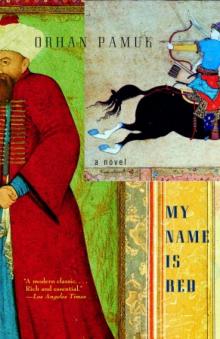 My Name is Red
My Name is Red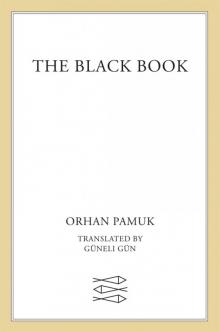 The Black Book
The Black Book The Innocence of Memories
The Innocence of Memories The White Castle
The White Castle Other Colors
Other Colors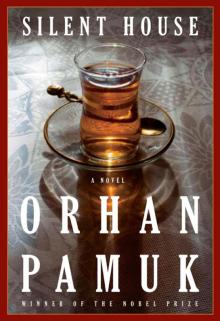 Silent House
Silent House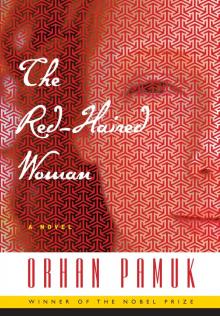 The Red-Haired Woman
The Red-Haired Woman The Museum of Innocence
The Museum of Innocence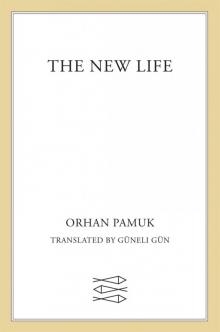 The New Life
The New Life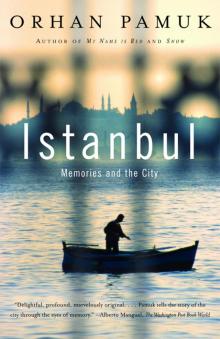 Istanbul
Istanbul